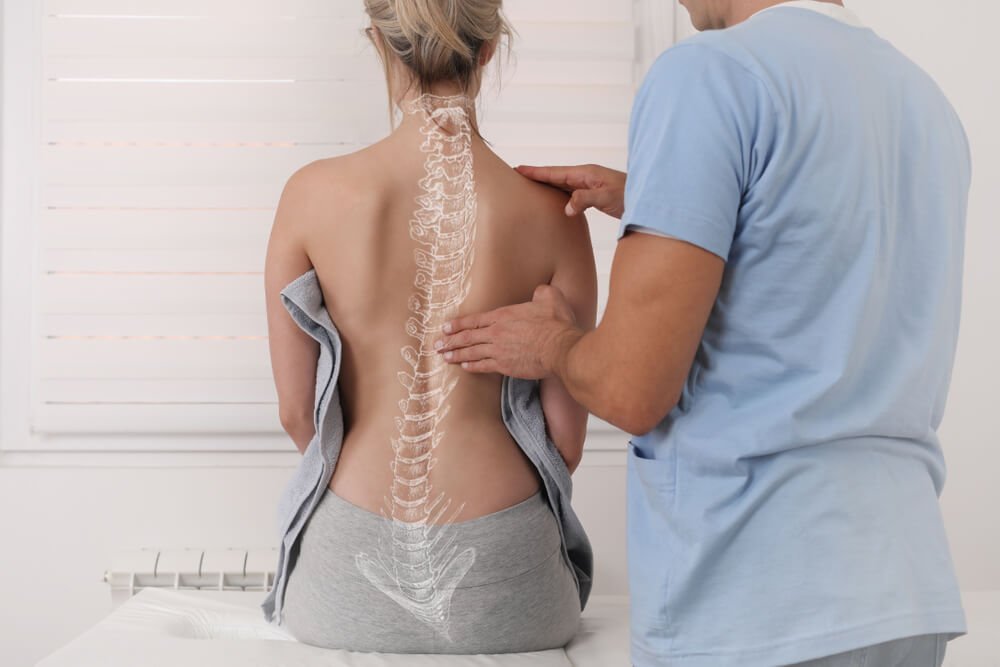Have you ever heard of scoliosis? Maybe you or someone you love is living with it. Scoliosis is a sideways curvature of the spine. It is not painful all the time, but rather uncomfortable. I have seen how it affects daily life, and I know it’s not easy. But there are ways to feel better, and massage therapy is one of them.
What Is Scoliosis?
Scoliosis, to begin with, is more than just having poor posture or slouching; it is a medical condition. The spine can take on the shape of an “S” or “C” instead of staying straight. Some people are born with it, while in others, it develops overtime and usually during teenage years. It can also appear later in life due to aging or other health issues.
Scoliosis can cause muscular tightness, stiffness, and even pain. It is frustrating to feel like one’s body doesn’t work like it should, and that alone can limit so many movements and activities. That is where massage can come in to help.
Why Massage Helps with Scoliosis
The first thing that comes to my mind when I think of massage is relaxation. However, for scoliosis, it’s more than just relaxation; massage focuses on releasing tension in the muscles that pull because of the curve of the spine. If you have scoliosis, you’ve probably noticed how one side of your back might feel tighter than the other. This imbalance can lead to pain or discomfort.
Massage, then, serves to bring blood into those tightened areas, reduces inflammation, and offers flexibility. And candidly, getting those knots worked out feels so much better.
Massage therapy, for me, is giving your body the pampering it deserves. It’s gentle and non-invasive, trying to cure the discomforts without the need for invasive procedures. Plus, who doesn’t love that peaceful, “ready-to-sleep” feeling after a good massage?
Types of Massage for Scoliosis
There’s no one-size-fits-all approach to massage for scoliosis. Different techniques work for different people. Let’s look at a few popular ones:
1. Deep Tissue Massage
This one goes beyond the surface. It targets the deeper layers of muscle. If you’ve ever had a knot in your back, you know how much relief it brings when someone applies the right pressure. Deep tissue massage can ease chronic pain and release tight muscles caused by scoliosis.
This is the go-to for relaxation. It’s lighter than deep tissue but still effective. It’s great if you’re dealing with stress or just want to feel more balanced overall.
3. Myofascial Release
This technique focuses on the fascia, which is the connective tissue around your muscles. Myofascial release gently stretches and loosens those areas. If you’ve felt restricted in your movement, this might help.
4. Trigger Point Therapy
Ever feel a specific spot on your back that’s extra tender? That’s likely a trigger point. This type of massage targets those spots directly. It can provide quick relief to areas that feel sore.

My Experience with Massage and Scoliosis
I’ve talked to many people about their experiences with scoliosis. One thing stands out: everyone’s journey is different. Some people notice instant relief after a single massage session. For others, it takes time and consistency.
A friend of mine has scoliosis, and she swears by regular massages. She told me how it’s not just about physical relief but also emotional comfort. “It’s like someone is helping me carry the weight,” she said. That really stuck with me.
I’ve also heard from parents whose teenagers have scoliosis. They’re often looking for non-invasive ways to help their kids feel better. Massage is gentle, so it’s a good option. And honestly, teenagers deserve to feel good in their own skin too.
How Often Should You Get a Massage?
If you are unsure how often a massage is to be done, take a cue from your body: some people enjoy feeling better and thus go in for weekly sessions; others may need going once a month. Listen to your body. Of course, you will know after your first session what works in your favor.
It’s just consistency, you know? It’s like going to the gym. You can’t just go to the gym once and expect results. It’s the same thing with massage. Give it some time, and it can really make a difference if you go regularly.
Finding the Right Massage Therapist
Not all massage therapists are alike. You want someone who understands scoliosis. At the time of making your appointment, state your condition. Inquire if they have ever worked with any person who have scoliosis. It’s OK to be choosy about your care. After all, it’s your health we are talking about.
If I’m seeking out a massage therapist, I will also read reviews. It helps you decide by hearing from other people who have had similar issues. And don’t be afraid to ask questions. A good therapist will take the time to explain their approach.
What to Expect During a Massage
First time getting massaged? Well, you could feel a little apprehensive, which is completely normal. Your therapist usually inquires into your condition, followed by uncomfortable areas. The therapists will assure you of a comfortable session.
You actually do not have to do much but relax. Just close your eyes and take deep breaths. If it doesn’t feel right, speak up because the therapist may adjust the pressure or place emphasis on some other areas. This is all your time to get better.
Self-Care After a Massage
Drink plenty of water after the massage to help your body get rid of the toxins released during your massage session. The next day you might feel some soreness, and that’s fine; your muscles are just readjusting.
You can also try some light stretching to keep the massage going. Just a little something: touch your toes or do a light twist. And if you’re like me, you might just want to take a nap. Go for it; your body needs the rest.
Massage Isn’t a Cure, But It Helps
Let’s be realistic massage isn’t going to cure scoliosis. It is not some magic fix. But it’s a way to manage the symptoms. It’s about improving your quality of life—feeling less pain, moving a little easier, and sometimes just feeling cared for.
You don’t have to live with scoliosis in isolation. Massage can be one part of your support system. Added to the regime of exercise, physical therapy, and other treatments, it may make a huge difference.
And hey, if you’re in Wake Forest, check out Raleigh Massage on Raleigh & Wake Forest. They understand what your body needs.








